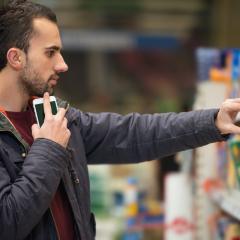Hispanics’ View of Corporate Social Responsibility
In this exclusive piece, Aleena Astorga Roeschley, senior project manager and multicultural expert at Communicus, Inc., discusses Latinos’ perspectives on corporate philanthropy. Many brand marketers have developed corporate responsibility programs where they team up with consumers to help those in need–General Mills’ Box Tops for Education, for example, is one of the longest running and most visible initiatives. But while Hispanic...
It’s a Color-Coded World
Consumers have long been trained to associate certain colors with specific brands. Take rental cars: I’m confident if I show you the color red and ask you about a rental car brand, you’ll think of Avis, orange will make you think of Budget, gold will make you think of Hertz, and you’ll associate green with National. Similarly, in the telecommunications business, it’s as if representatives from AT&T, Verizon, T-Mobile and Sprint...
Why the #1 Problem with Advertising is the Easiest to Fix
There are an infinite amount of variables that an advertiser can control to maximize the success of a marketing program. It starts with how to position the brand, which media to use and how to allocate the investment. The puzzle is getting even more complex with the emergence of programmatic buying, second screen opportunities, native advertising, social media vehicles, and all of the other trendy tools out there today.
Save a Little – Lose a Lot: The Potential Pitfalls of Translated Ad Copy
As more brand managers come to the realization that the Hispanic consumer plays an important role in the current and future health of their brands, the struggle to find enough money within the advertising budget to succeed across targets has intensified. Over the past decade or more, most of the larger brands have carved out sufficient ad budgets to engage Hispanics with dedicated creative, and the debate is around whether to create...
Millennials and Brands
Many marketers are concerned about the death of the traditional brand. As the millennial generation (those classified as adults ages 18-34) start to exercise their purchasing power, there is a strong sense of foreboding. The media is full of reports of how millennials don’t pay attention to or believe traditional advertising. Store brands proliferate and consumers who switched from name brands to save money when their household...






